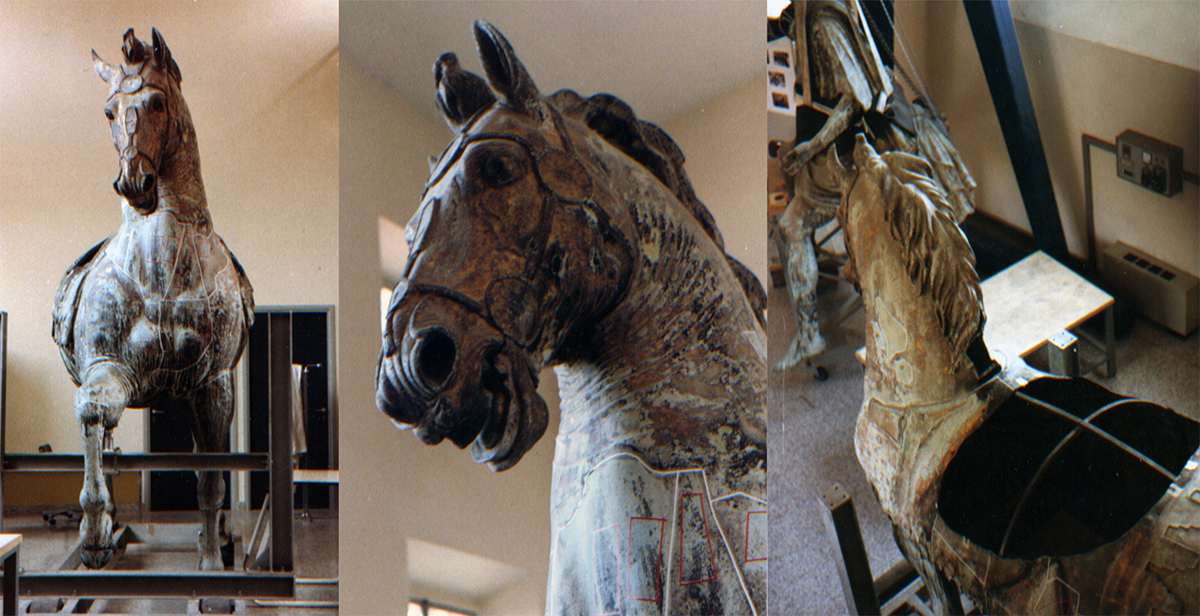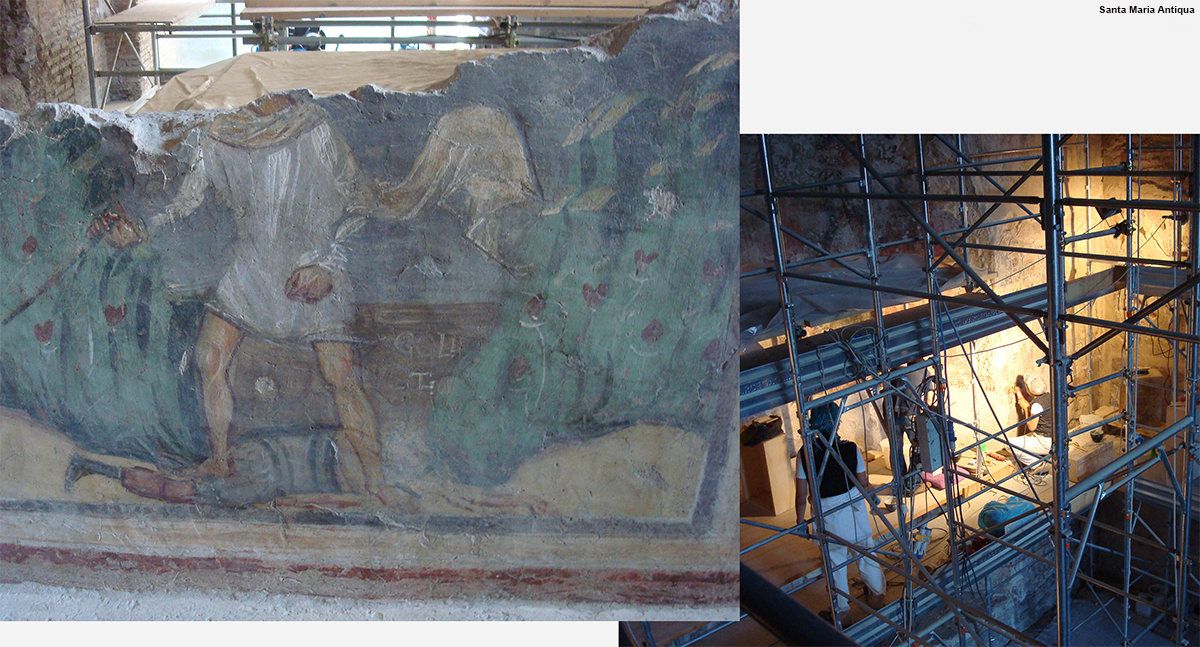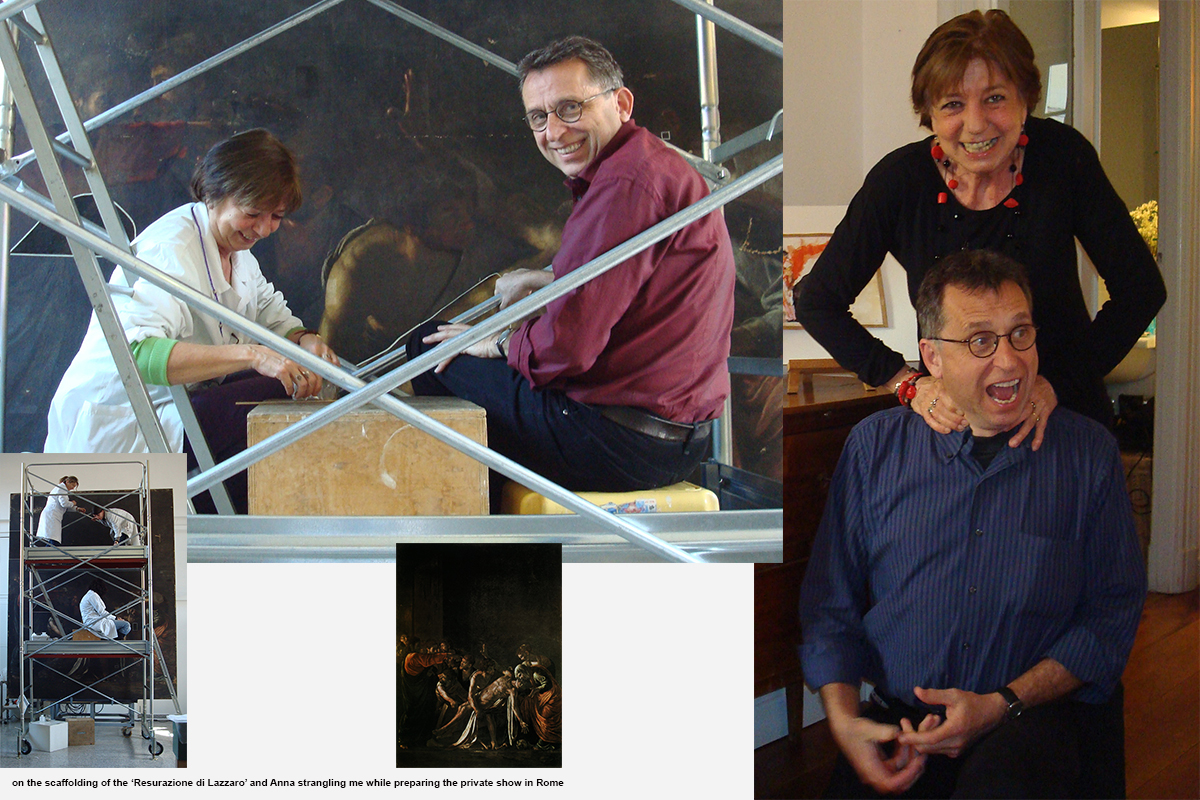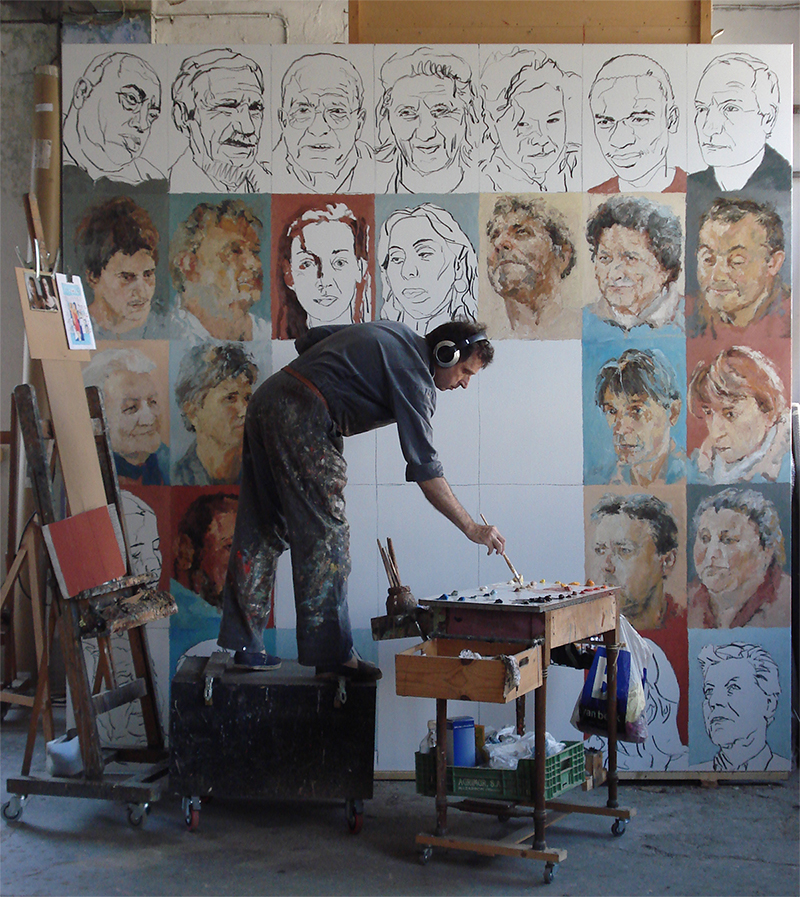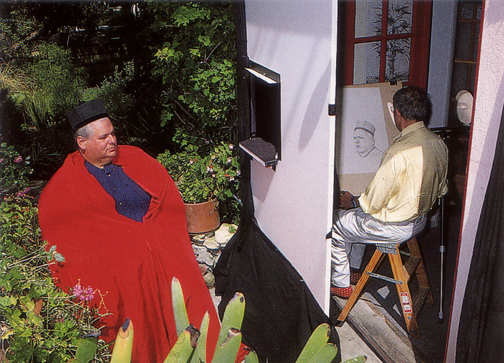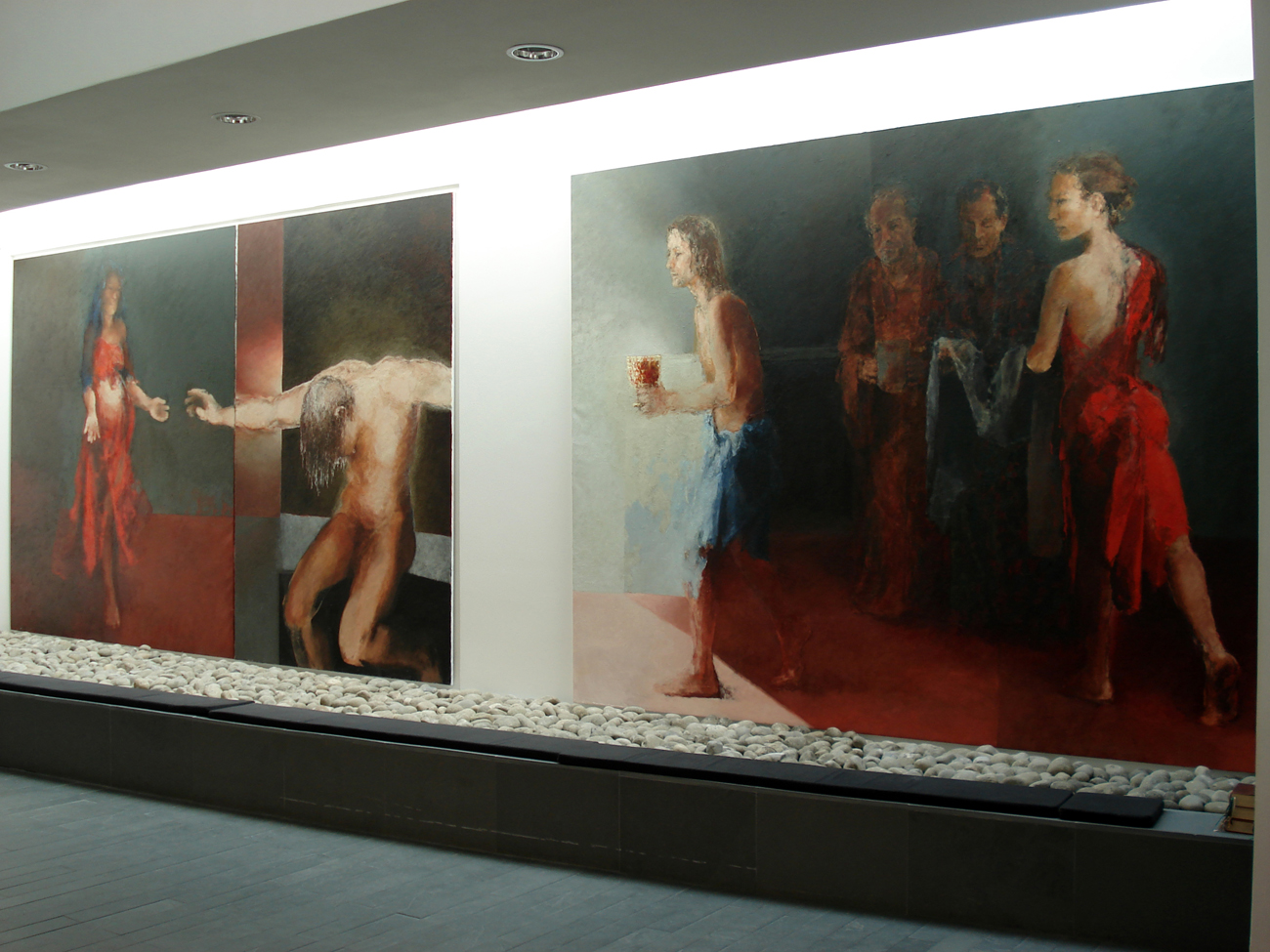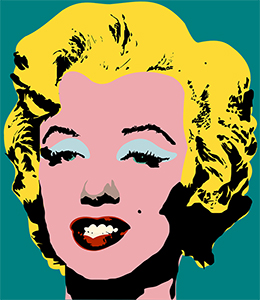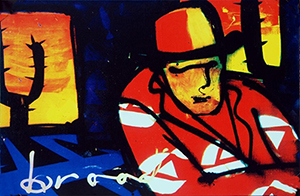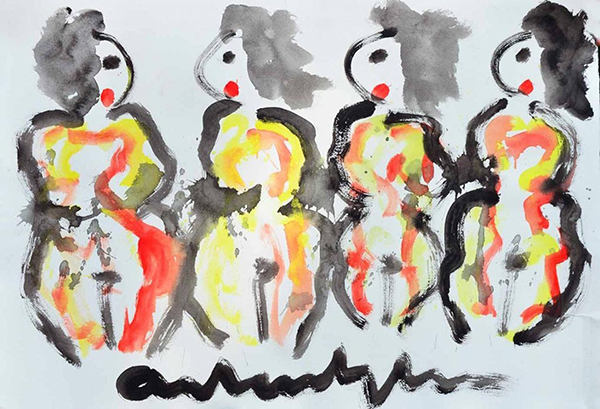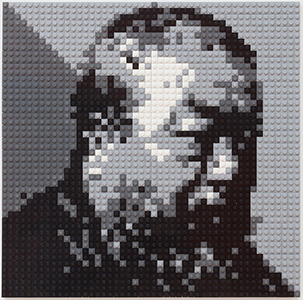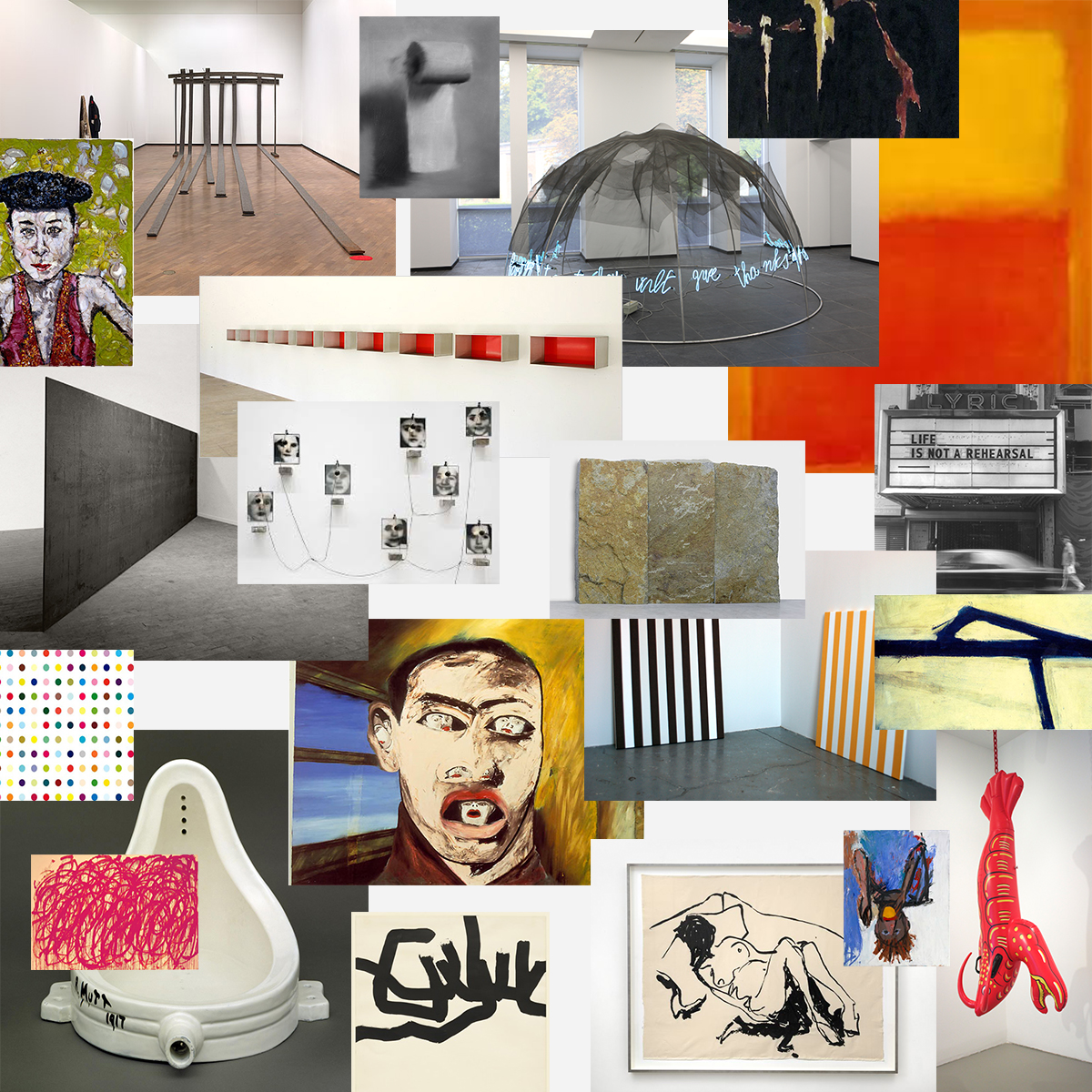11-03-2016: ANNA
I feel a fortunate person. I must have met Anna in 1985. For me she was the personification of what she did, an art restorer. She died a year ago, far too young.
With this blog I hope I can preserve the memory of her, ‘to restore her’, bring her to the present.
She was the director of the 'Istituto Supreriore per la Conservazione ed il Restauro'. She was like an ocean of knowledge.
Thanks to her I got to see the most astonishing artworks from very nearby.
And she bought work of mine; lecturing me that I had used the wrong materials…
Amongst the wonders I saw:
The statue of Marco Aurelio while being restored.
The Foro Romano in the snow
The Santa Maria Antiqua church frescos (it astonished me that the clothes of the person were almost painted in an impressionist way. There you go, Vasari!!! Before the Romanesque period they knew how to paint naturalistic!)
Tiziano's Amore Sacro e Profano * (Anna showed me that the figure on the left is not sitting on the tomb but ‘floating’ in front of it).
*: click on the name to see a video about the painting.
Carravaggio's Resurazione di Lazzaro *
*: click on the name to see a video about the restauration
And so many more great works... When I was in Rome I always visited her office or a ‘cantiere’. We talked about the works from the different points of view, she as a preserver, me as a painter.
There was more.
She gave me the recipe of bucatini alle sarde and that wonderful very easy to make spaghetti with pecorino stagionato, lots of olive oil and black pepper…
In 2010 I tried to get my project 'Art Hysteria' * off ground. Anna liked it very much (*click on the name and you will see the sketch of the project I made for her with two works she restaured.... Which paintings did I quote?).
We went to the Palazzo Barberini to talk to the director about the project as a possible aid for children to get better introduced to the arts. I still belief it could be a great way to make children really look at art, but as with so many of these initiatives, the times are against it.
In the palazzo Barberini I saw the Pietro da Cortona fresco with her that I talked about in the last blog… (click on the word grey 'blog' to go to the blog).
When we walked through the garden the trees were blossoming. It is there that I decided to paint flowers.
Rome will never be the same again.
08-03-2016: PAINTING AND PHOTOGRAPHY 3
Let’s go back to the period when the Camera Obscura was a magical aid for painters. Let’s go back to the late Renaissance and Baroque.
When we look at the paintings with masses of people and animals, we do not realize that these were considered the plus ultra. It is only logical, if you think that those scenes could not be performed in front of a Camera Obscura.
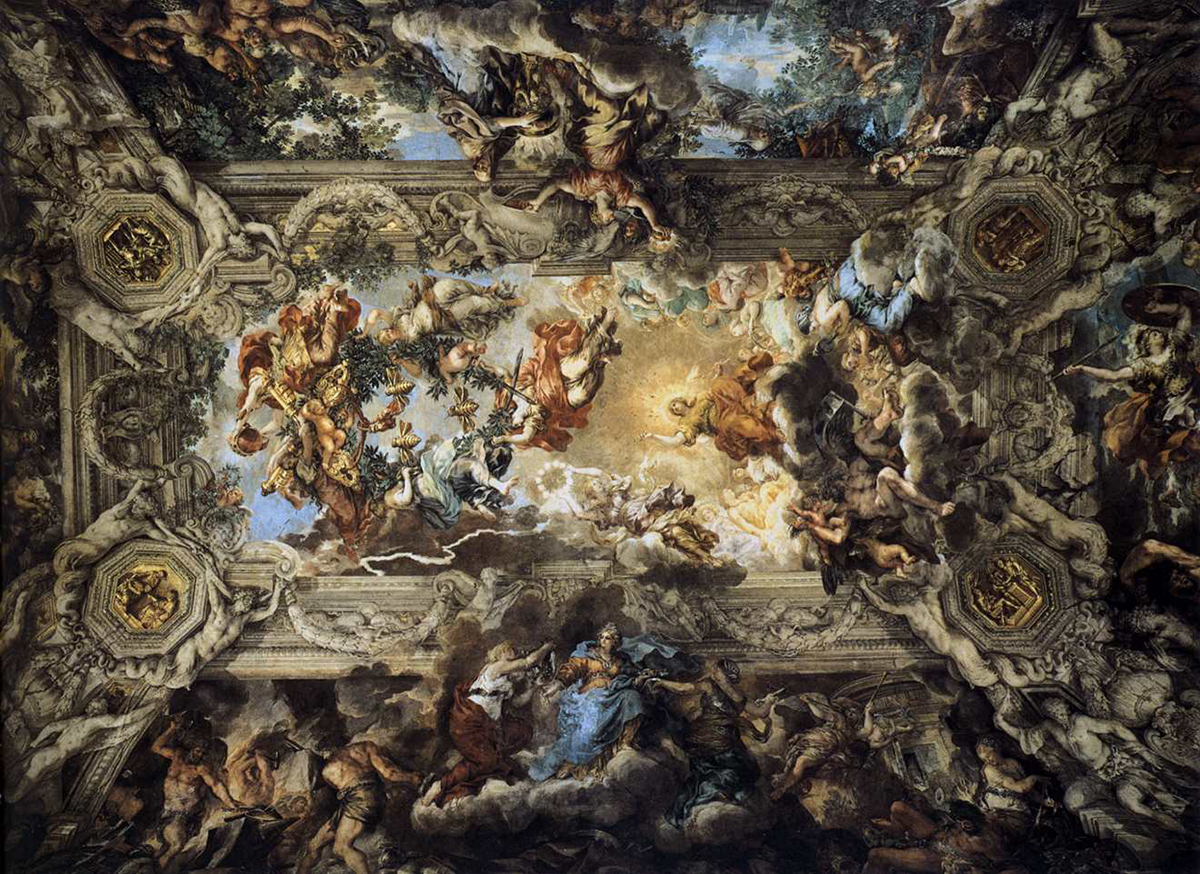
Here is one of the last treasures Anna Marcone ‘gave’ me (click on her name to know more about her, I will dedicate a blog about her soon). She passed away just over a year ago. Maybe that is why I have been thinking much about her these days...
Thanks to her I saw the fresco on the ceiling of palazzo Barberini by Pietro da Cortona… I laid there on a couch for I don’t know how long looking up… To think this painting was made by painters laying on their backs painting in the wet stucco…
Another example? Here is a documentary about how Michelangelo worked. Click on his name to see it. No wonder he was not too happy about painting the ceiling of the Sistine chapel.
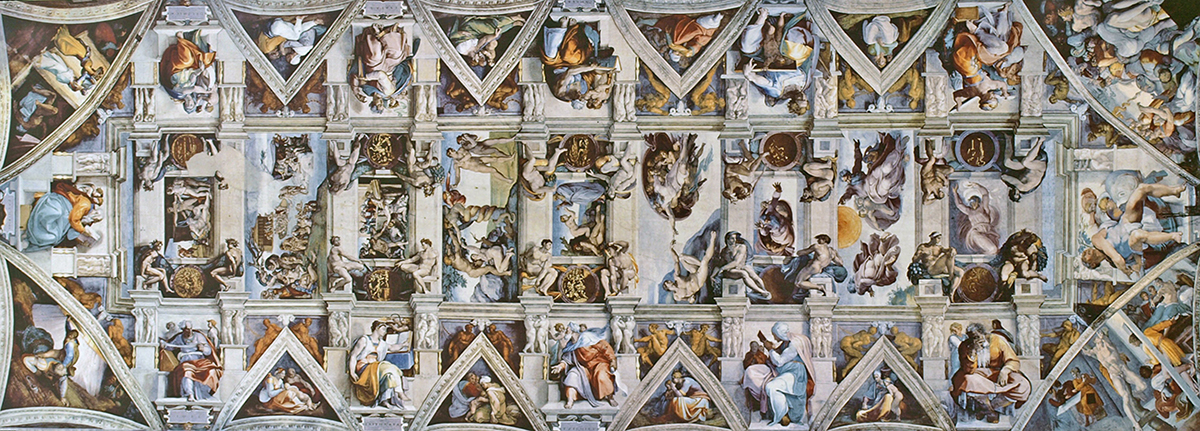
With the means we have now, practically all is possible. And even moving!
Ok, you need some money and a crew. But then artists had quite a crew as well. Me, I work alone… Don't expect from me stuff like the video below...
22-02-2016: PHOTOGRAPHY AND PAINTING 2
A thing hardly anybody pays attention to, is that in the period before the Renaissance painters were not interested in painting realistic imagery. It was actually sort of forbidden. In the Middle-Ages art was totally conditioned by the following religious idea: the human body was the temple given to men by God and so to recreate a truthful image of it was competing with God. Images of human beings only helped people to understand who the saints were one preached about in the church. Most people could not read.
(text continues under image)
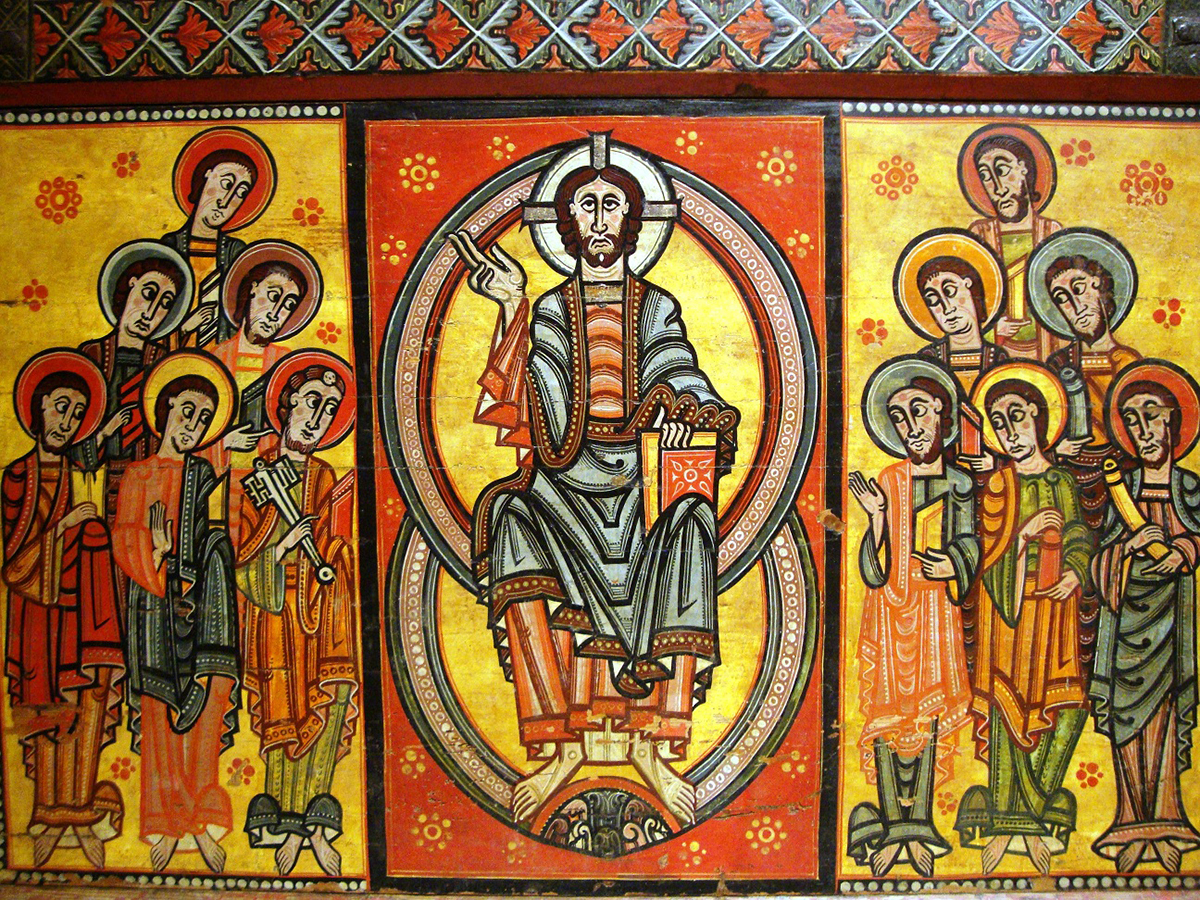
Saint Peter to Saint Marc: 'I want that book!'
Only when the idea of a nature that could be manipulated, was given to men by God to explore, the interest in reproducing the world in a realistic became desirable. I think that is why only in 1420 technical means were being used to make realistic images.
Our idea of art history is still very much conditioned by Vasari’s book of the lives of the artists (Vasari was a contemporary of Michelangelo and Leonardo da Vinci. He hoped that by describing the lives of famous artists the high quality or the arts could be preserved).
(text continues under image)
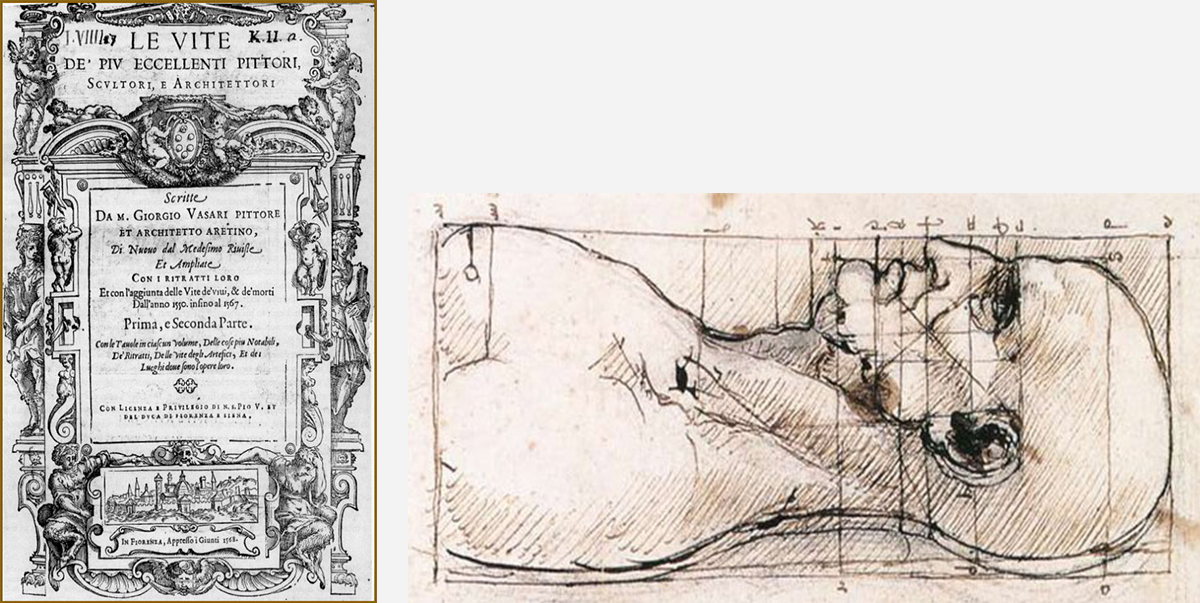
This has changed now. Our ideas about religion, the place of God in our lives is very different. We hang very much on reason and photography has become a common presence. This influences the way we look art much. Could this have as a result our appreciation of the cold, empty and technical mass-produced works of somebody like Andy Warhol?
I keep on talking about the essence of art lying outside reason. I belief that an artists should always try to improve his craftsmanship. Only through studying hard, chance exists for the mystery to creep in the piece of art one is creating at that moment. Often more by accident than by forcing it.
(text continues under image)
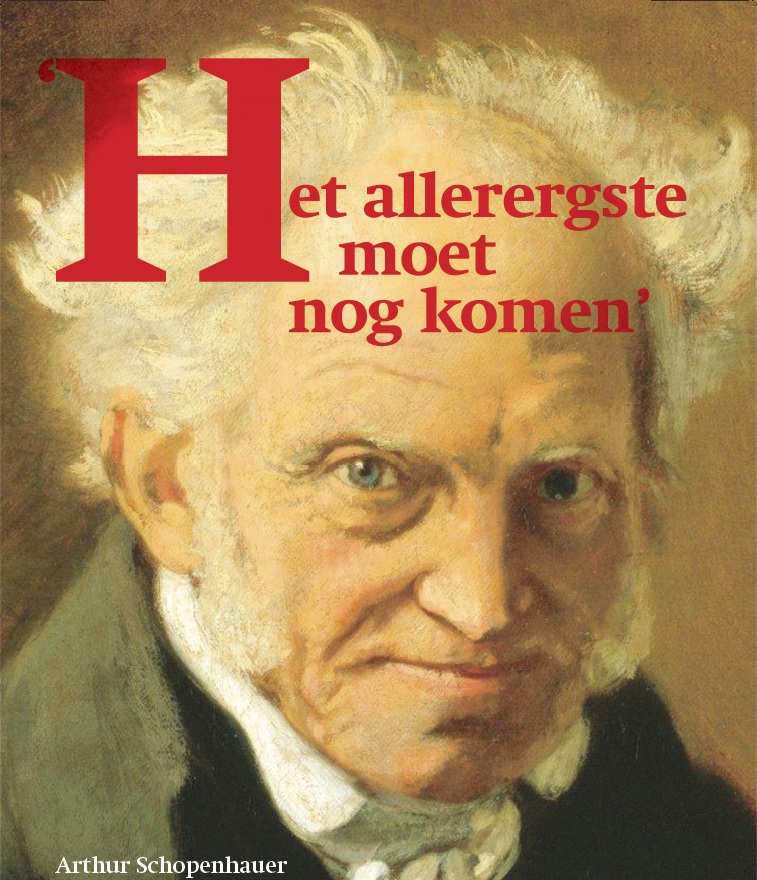
'The worst of the worst is still to come.'
Part of the studying is to integrate the use of photography as a means.
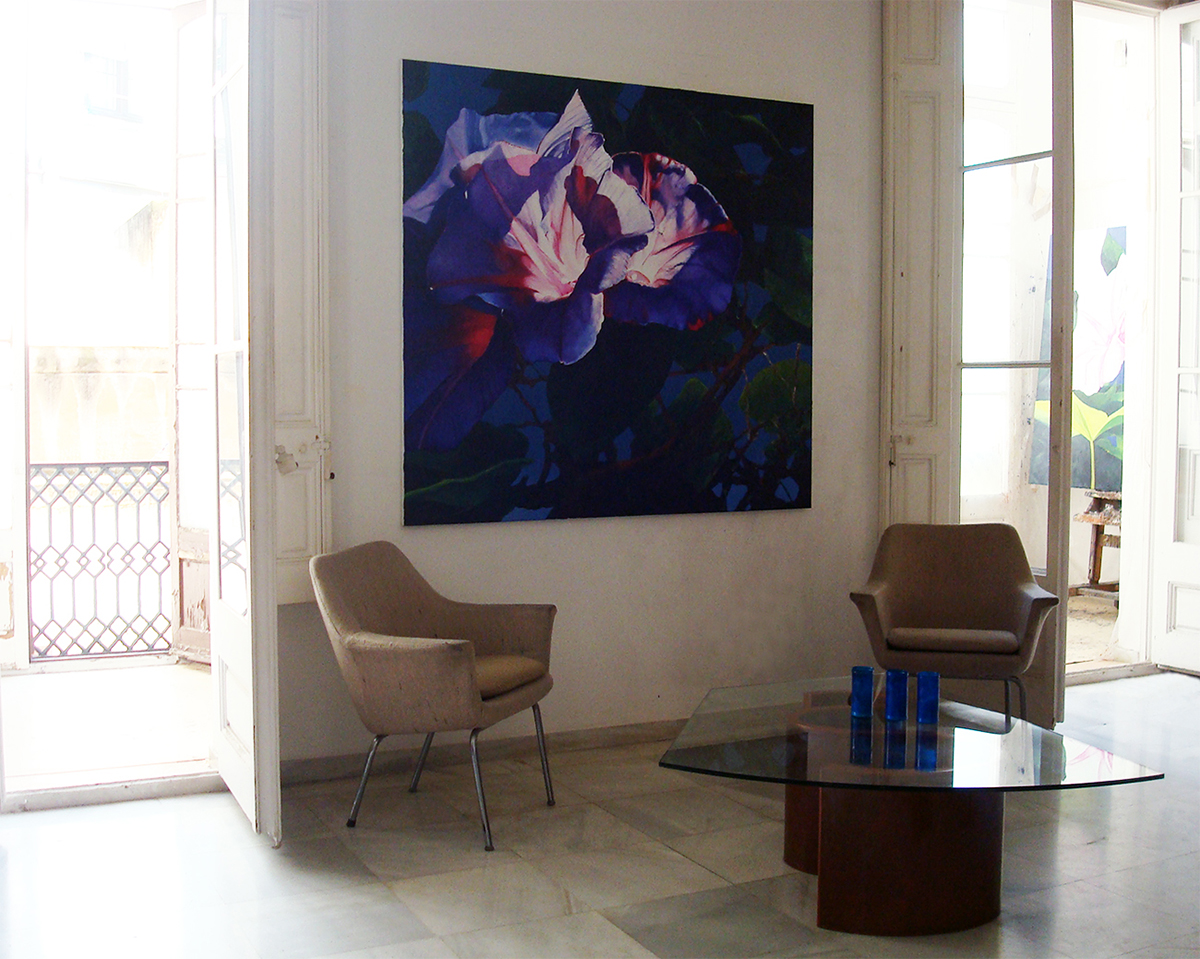
03-02-2016: PHOTOGRAPHY AND PAINTING 1
Photos can help you when you paint. For years I avoided them, but then I read two books...
These are two of the most important contemporary books about painting without a shadow of a doubt: ‘Secret Knowledge’ by David Hockney and Philip Steadman’s ‘Vermeer’s Camera’. The books deal with the use of technical means for painting. They talk about the Camera Obscura, Camera Lucida and show that since centuries (long before the projecting of slides on canvasses) artists have used these or similar means to paint in a realistic way.
Artists are often being judged on if they can draw well without the help of such means. These books throw everything upside down.
And then there was the documentary: 'Tim's Vermeer'... (click on the name to go to the trailor).
My education has been about how to draw without these means and to concentrate on depth and more. For the last two items see blog: 7-12-2015: WHY I PAINT BULLS.
I have been very lucky. Why?
Without this battle of years to create space on a flat canvas and having to put all seen in a specific painterly handwriting, I can now use photos as a tool without them overwhelming or dictating me.
‘Only strong legs can carry the weight of luxury‘ is a Dutch saying.
Photorealistic paintings have never interested me, because I find no real challenge in them. One fundamental difference is being neglacted, when painting like a camera: we have two eyes instead of one!
I agree with Picasso when he said that photography has liberated arts from the dictatorship of realistic painting (loosely quoted).
No doubt the explosion of all the different styles like Impressionism, Expressionism, Nubis and Cubism happened in a period when photography became accessible for the big public. Painters just had to come up with a new trick to show that painting is not the same as photography.
P.S.:
I think it is probable that we can go back a lot further with the use of technical means like projection than 1420. A memory I have as a little child:
It is summer; I lay in bed with the curtains closed. Outside it is still light. Between the wall and the curtains there is a narrow strip of light projected on the bedroom ceiling above the curtains. I watch the vague reflections of the cars pass by projected on the ceiling. This is the principle of the camera obscura. The Greek or Romans must have discovered that same effect and curious of representing realistic imagery, they must have made some or other use of it.
28-01-2016: PAINTING WITH LONG BRUSHES
I don’t have much time to paint and so this blog is about painting.
Painting with long brushes!
I started to use them in the 80’s after having seen the photo of Matisse drawing. I tried to draw with sticks of a similar length. It does not work for me. With sticks that long all becomes casual. Matisse must have had the strength of a bear. Or maybe he did not mind losing control.
(text continues under image)

I heard Velázquez used long brushes too… I have not found proof. Google could not help me. But if my memory still works (turpentine does bad things to the brain), I could buy long brushes named after him in Amsterdam. They were expensive! I solved this by taping sticks to the brushes. Like that I could also find the ideal balance. Balance and length have to do with each other.
(text continues under image)
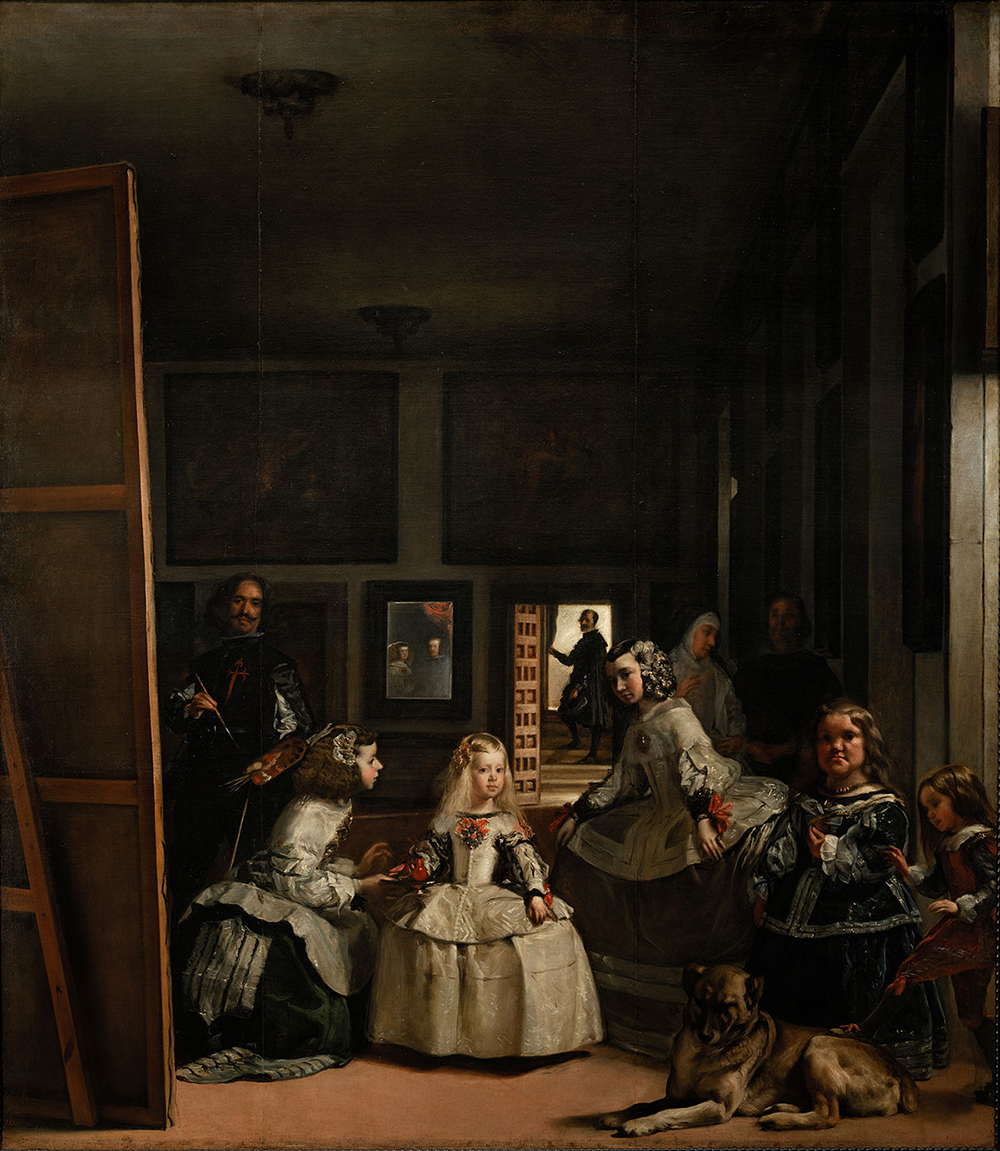
Seeing Velázquez’ ‘Las Meninas’, I wonder how he could paint the top of the canvas with the brushes he holds in his hands.
(text continues under image)
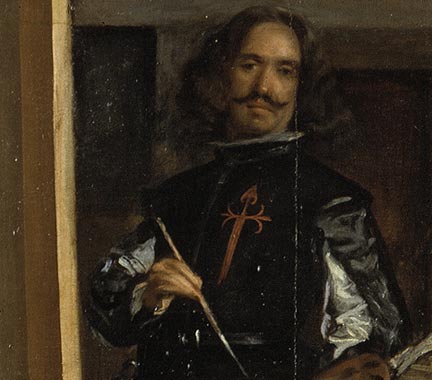
I used a table to stand on for several works for the church. Even with long brushes. There were practical problems to be solved. In the lecture I give at the opening I will tell about many, many more.
Not only did I encounter practical problems working on these big size works.
Nat Neujean, a sculptor I met in Italy, told me about the changing of proportions, when one paints a human figure more than life size.
(click on his name to go to his site in a new window).
And the handwriting becomes different working big.
I still feel nostalgic about painting the works for the church. I could concentrate fully on my work. It took me 2 years to finish them.
(click on image to open image of Pietà on the site in a new window and text continues under image)
Nowadays I hardly use big brushes anymore. I just walk back and forth to get a good overview. It is good for my physical condition. Unfortunately I don’t paint big canvasses very often.
In the video you see me use them.
21-01-2016: ABOUT FAKE
In the blog of 15-09-2015: Does an artist still need to be alive for making his artwork? I talked about Andy Warhol not making his own work. Hence, that it could have been a good idea to have assistants and others continue making his works.
Andy Warhol
What joy, the Dutch have their own dead artist who apparently is still very productive! The one and only Herman Brood! (click on the name to see a video) It is a real pity that there are no English subtitles in this documentary (down below the blog), it is worthwhile seeing how easy one can falsify Brood’s work, receive an authenticity document and sell it for good money.
Herman Brood
What should/could we learn from this?
Two things:
-
Go for art that is bedded in craftsmanship. It is easy to copy Andy Warhol, Herman Brood, Anton Heyboer (an other Dutch Hero! click on the name to see a video) and many, many other artists. And up to date: Ai Weiwei. My daughter has lots of Lego. More difficult would be to make a good Goya, Rembrandt, or a good Horst Janssen. My work? Well, I often try to fake my own work, but badly fail.
-
Buy what you like and don’t go for names. Look at the stuff you buy! Just falsify the works of the mentioned big names. It saves you a lot of money and you have a nice weekend, feeling a GREAT ARTIST!
Anton Heyboer
Ai Weiwei
A tip: on the 4th of February my show opens in Barcelona, don’t miss it! I will give details soon.
P.S.: years ago as a joke I thought about creating a museum with all fake pieces. How many have you recognized below? How many do you think you can you falsify? I have stopped at 21 works, but could have easily gone on.
Name of the museum? 'THIS IS NOT A MUSEUM' (thinking about René Magritte)
07-01-2016: STALINGRAD, ASGER JORN, VASILY GROSSMAN, ART AND WAR
In the last couple of days some things came together. I saw a friend who lives in London and Saint Petersburg. We exchanged names of artists worthwhile discovering. I mentioned the book ‘Life and Fate’ of Vasily Grossman.
It is an incredible (and for a long time in Russia forbidden) novel I read in one furious breath.
If you click on the name of the book, you can read more about it. If you click on ‘Vasily Grossman’, you hear a part of his plea for the book to be set free.
A comment on the plea and book: ‘The book is an astounding, shattering masterpiece, and even this short excerpt from Grossman's letter does indeed give an inkling of its power.’

Grossman died before the book was published…
And some days ago I talked with a Danish friend about all the beautiful things in the world. I saw Danish artist Asger Jorn’s painting: ‘Stalingrad, le non-lieu où le fou-rire du courage’ in the Stedelijk Museum in Amsterdam years ago. Ever since it is part of the permanent collection of my dream museum. This museum can be found in my head, I visit it quite often…

Both the book and the painting talk about the siege of Stalingrad during the Second World War.
I keep on turning around the item art and politics. What should the role of art be?
An art movement that commented on the horrors of the Second World War was COBRA. The name is a combination of the names of three cities where the artists came from: Copenhagen, Brussels and Amsterdam. Asger Jorn was one of the artists. Others were Karel Appel, Constant and Corneille. For years I had the same gallery where Corneille made fame and fortune. You could buy ties, shirts, cushions and silkscreen prints of his works. It was a total sell out.
Silkscreen of the design of Corneille's tie:
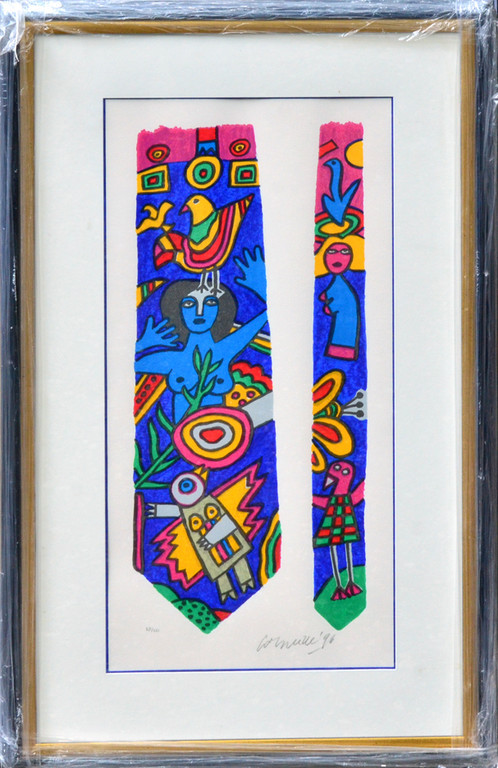
As a last treat I want to mention Constant Nieuwenhuys' ‘New Babylon’ project. Constant created the plan for the 'city of the future'. A place where ‘everybody is an artist’… . Click on the name of the project to know more.
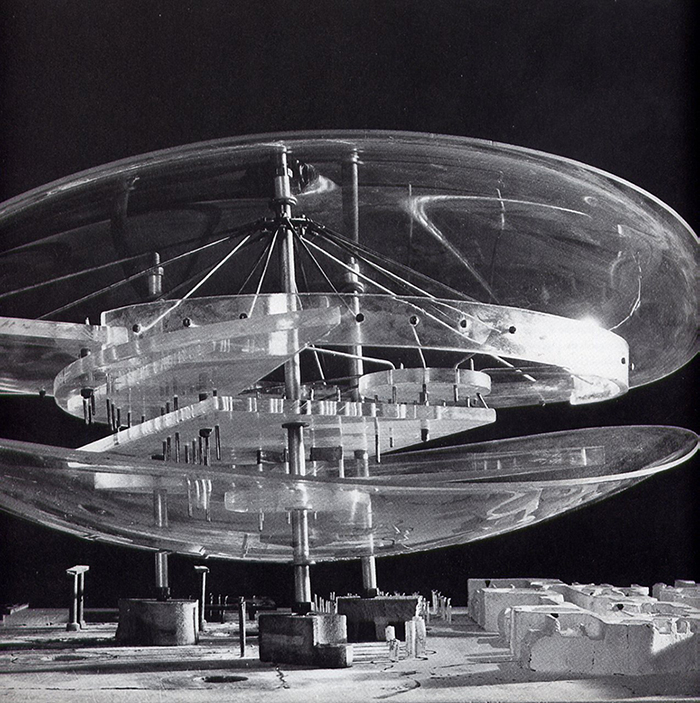
There you go, yet another artist not only commenting on life and politics, but even coming with a proposal…
Should we build this city or respect to Kraus’ definition of what the artist is about (I could not agree more. In the sketch below the quote is held up by Karl playing Willem de Kooning in shorts on the beach, no tie):
‘Only he is an artist who can make a riddle out of a solution.’
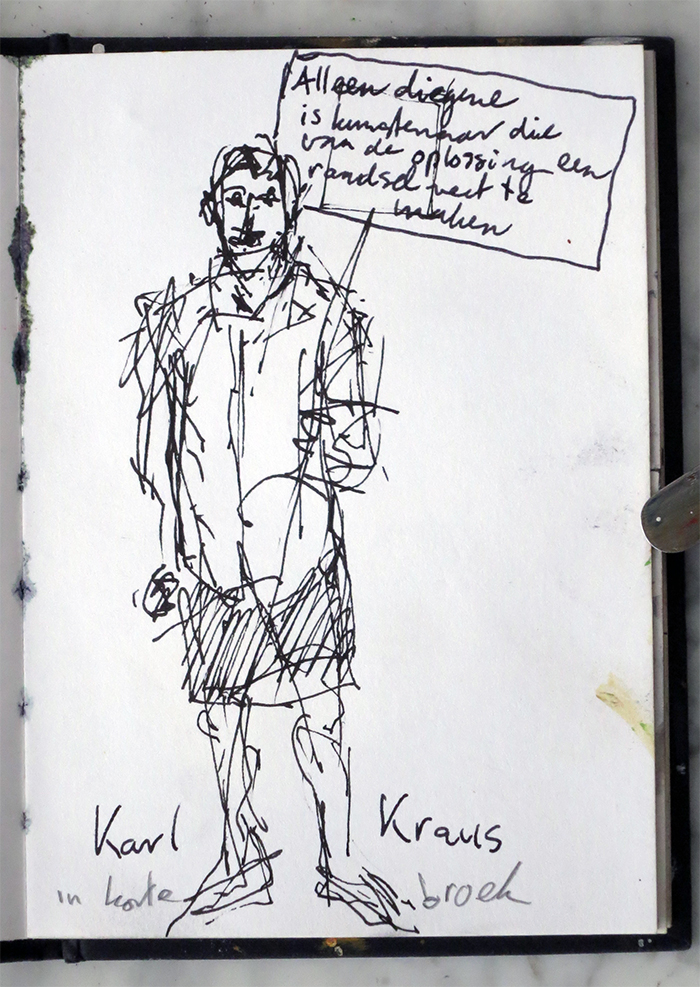
Video: a short documentary on the siege of Stalingrad (sorry, I could not find anything better, read between the lines and read Grossman’s!).
P.S.: Ukraine, what a place to live…01-01-2016: ART AND TIME
All the best for 2016! Should we throw away the old stuff? Do we still need it, can we still appreciate it?
At the first day in the New Year we should be a bit serious and talk about the future, the now and the past in the arts.
On the page: TECHNIQUES : on painting of the site
I posted some thoughts about art. There is one about the definition of ‘contemporary art’. My desired one is:
‘Contemporary art is art that moves the spectator today. It is not important when or by whom the work was made or why (hence, Rembrandt is one of the greatest contemporary artists).
All the other criteria used are mostly misleading and only for the glory for the ones using them. Many times I think these criteria are used for marketing sake or as sales excuses.’
I define art through the eyes of the spectator, not through the eyes of the artist. My ideas and aims in my work are not vital for the spectator to know. Read more of the texts about art on the site and it may be clearer.
A consequence is that my political ideas are not of great importance. And away with time!
I wander which place in art history Ai Wei Wei will have in 200 years. (Especially for the Italians; on the 31st his performance here shown means something different…)
My place in time/history? I could not care less…
Images:
Maurice de Vlaminck, 1900’s New Years wish
Ai Wei Wei dropping an ancient Chinese vase (performance)
Two sketches of mine: ‘December 31 1988’ and a philosophical one, the passing of time makes us thoughtful: ‘Sheep at the end of the world, Plato’
A painting of mine that did not make it: ‘Ice princess’ Not anymore existing…
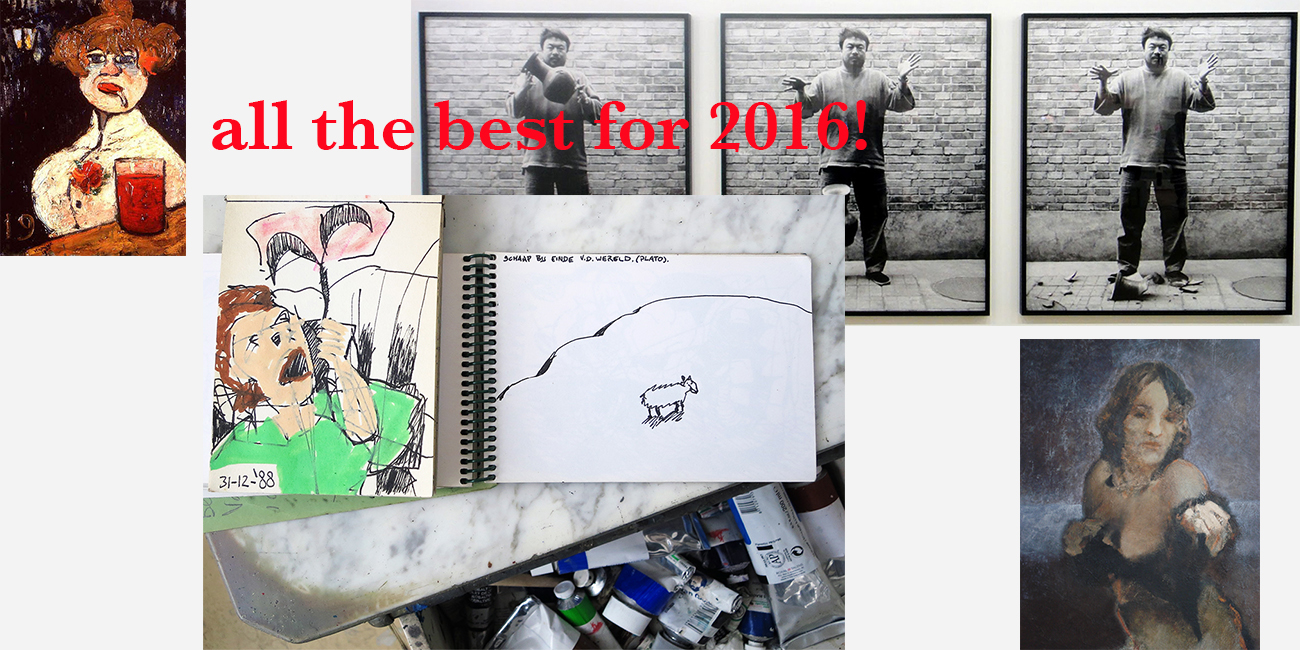
18-12-2015: MIST OVER SEA
I paint in many different ways now.
At the academy I just used to build up layers of paint.
All the three Italy years (after the academy) were formative years. I had to cut loose from the harness given by the teachers and fellow students.
I don’t remember when I started to cut in the layers of paint. It seemed a logical step then and it still does. The idea came from how I do my charcoal drawings. I am addicted to the rubber eraser. Why just go one way, from light to dark and not the other way as well? To undo what one as done…
In oil it is different, you can always go from dark to light too, but partly scraping off the last layers gave me more letters in my alphabet.
Light on dark or vice versa gives a certain effect, but scraping away dark, so light comes back or vice versa works differently.
This and my way of getting to a finished painting make a painting typically mine. I can start with the idea of a landscape, move over to a portrait and end it as a bull.
This painting has remained a landscape all the way. But in the video you can see the many transformations and the scraping.
As well as the invention of the oil tube, for me the invention of a certain type of cutters has broadened my scale of possibilities.
MIST OVER SEA
Oil on canvas
73 x 92 cm.
2015
On the site: mist over sea
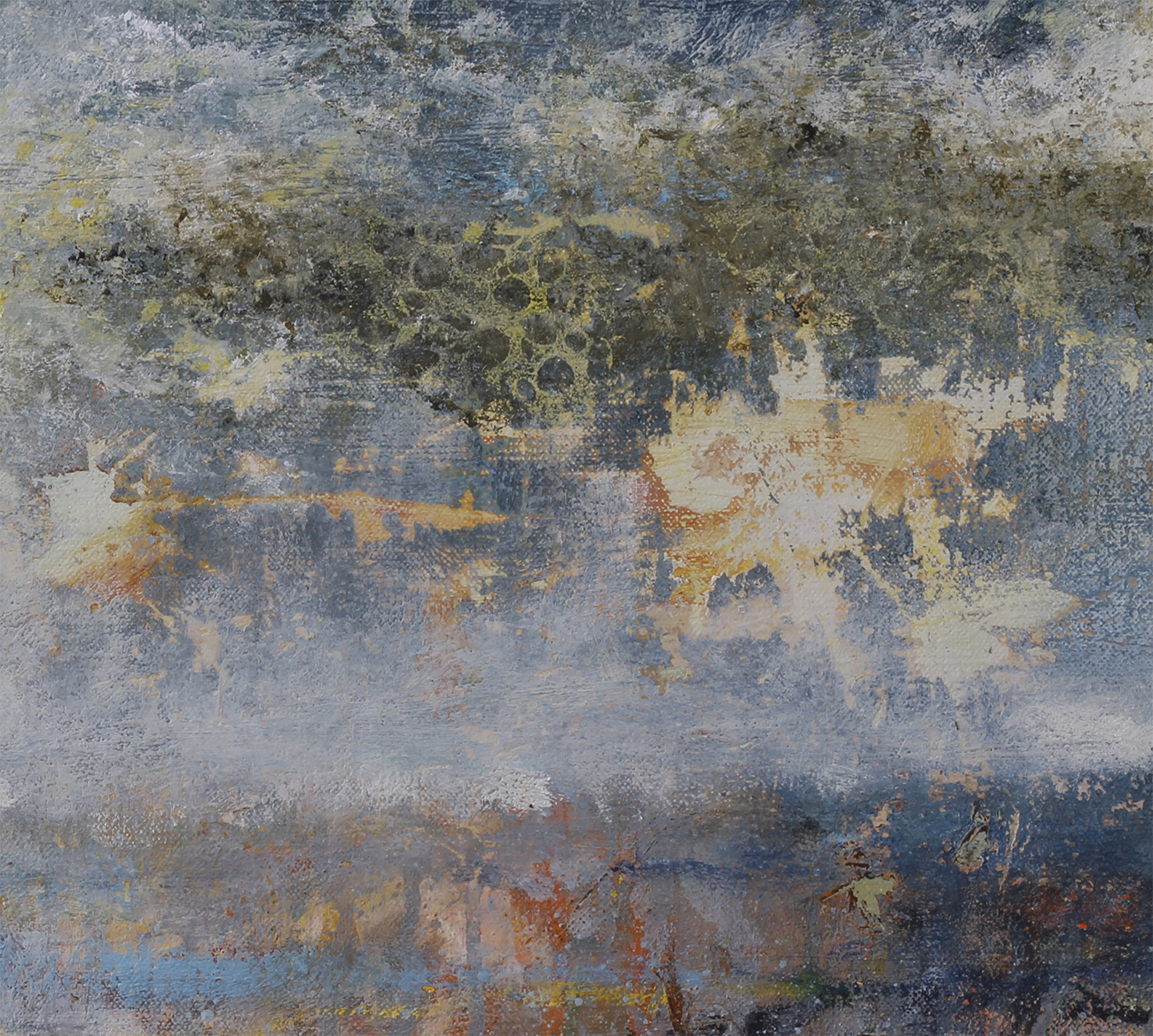
13-12-2015: LANDSCAPES 2
Next to bulls and portraits, landscapes interest me. The challenge is the creation of that third dimension. Space… the illusion of being able to dive into the painting. To have a 'real' window...
Of my heroes I want to mention Hercules Seghers and Pissarro this time.
These two are each other’s opposite in some ways.
Pissarro was the great impressionist. I often think I can see in which part of France and at what time of day and in which season the painting was made. The light is so incredible. Thanks to the invention of the tubes and the revolution in chemistry, the painters could paint outside.
When I see his works I always have the desire to go to ‘La Rongère’ and paint landscapes outdoors myself. ‘La Rongère’ is one of my paradises on earth. The people who have been there, know what I talk about.
And then there is Seghers. Rembrandt collected his work, mostly etchings. In this blog you see details of the etching of Seghers (and I should say Rembrandt). Rembrandt bought the plate and re-did the right part. So now half of the work is done by Seghers and the other half is done by Rembrandt. (For the whole etching click on: VLUCHT NAAR EGYPTE) I love Rembrandt’s work, but if the etching would be cut in two and I could to take only half of it, I would go for the Seghers half.
Why?
People still wander how Seghers made them. He did not (only) use the technique of scratching with the needle or the commenly used aqua tints. He constantly experimented.
I love to hide and transform the brushstroke. Here I go in Seghers’ direction. I search for the unexpected. You can see a detail of a still unfinished landscape I am working on.
IMAGES:
two works of Pissarro.
detail of the etching, the part of Rembrandt.
detail of the etching, the part of Seghers.
detail of a landscape I am still working on.
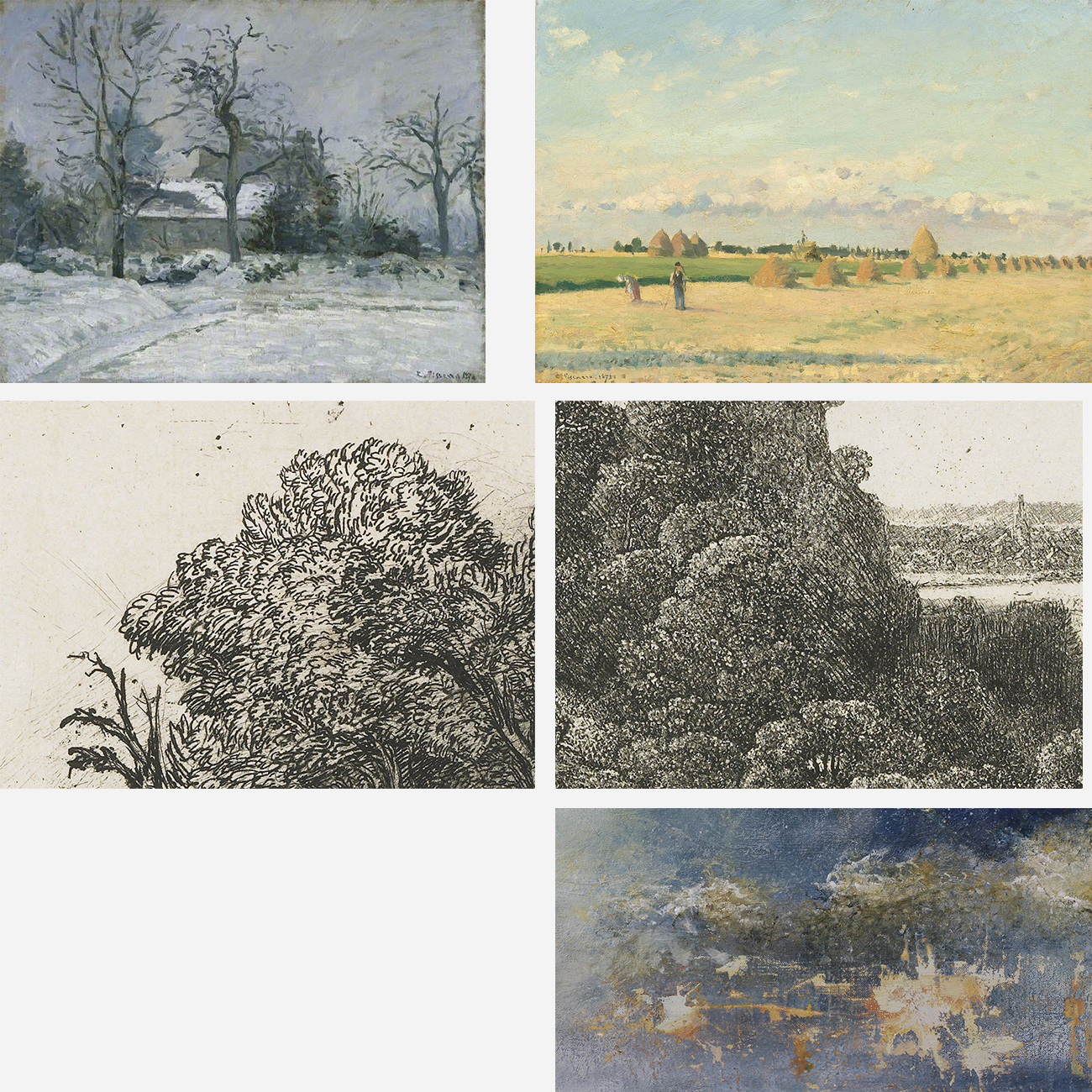
Pisarro ... Seghers ...
Rembrandt redoing Seghers ...
All totally unknown knowledge to me.
Thanks!
Frans
